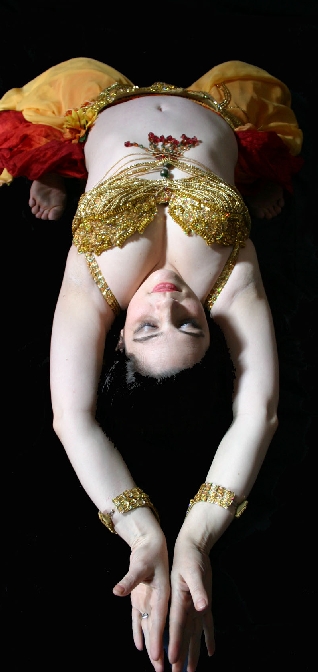|
|
 |
|
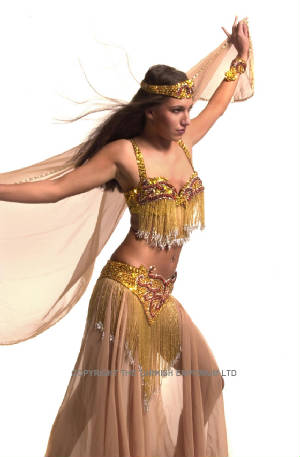
|
| Where to purchase items for Belly Dancing: |
Historically, most of the dances associated with belly dance were performed with the sexes separated; men with men and
women with women. Few depictions of mixed dancing exist. This practice ensured that a "good" woman would not be seen dancing
by anyone but her husband, her close family, or her female friends. Sometimes a professional dancer would go to a women's
gathering with several musicians and get the women up and dancing. Today, sex segregation is not as strictly practiced in
many urban areas, and sometimes both men and women would get up and dance socially among close friends in a mixed function.
However, while social dancing during acceptable circumstances such as family functions is accepted and even encouraged, there
are many people in Middle Eastern and North African societies who regard the performances of professional dancers in revealing
costumes, for mixed audiences as morally objectionable. Some have even gone so far as to suggest that such performances should
be banned.
Because the most popular venue for the dance remains night clubs, (as well as the proliferation of video and DVD recordings
of popular Egyptian dance celebrities), it is this version, rather than the folk or social versions of the dance that is most
popular. The costume now associated with this dance is called bedlah in Arabic (meaning "uniform") and was adopted by dancers
in Egypt in the 1930s, from where it spread to other countries in the region. It owes its creation to the harem fantasy productions
of Vaudeville, Burlesque and Hollywood during the turn of the last century, rather than to actual authentic Middle Eastern
dress. An enterprising night club owner in Cairo named Badia Masabni is credited with the adoption of this costume due to
the fact that this was the image that Western tourists came to expect, rather than the native costumes which covered and concealed
the contours of the body, with only a scarf or belt tied around the hips to highlight the movements.
The mainstays of costuming for these styles include a fitted top or bra (usually with fringe of beads or coins), a fitted
hip belt (again with a fringe of beads or coins), and leg coverings that include harem pants and/or skirts (straight, layered,
circular, or paneled). In the U.S. a "veil" may also be used; this is a three-and-a-half to four-yard piece of fabric that
is used in part of the dance to move about and frame movements for the dancer. In the 1940s King Farouk of Egypt employed
Russian ballet instructor Ivanova to teach his daughters, and it was she who first taught the great dancer Samia Gamal to
use the veil to improve her arm carriage. Most Egyptian dancers use the veil as an opening prop which they discard within
the first few minutes of their routines, while many Western dancers will use the veil for an entire song. In Egypt, night
club dancers will also wear full beaded dresses, called baladi dresses, to do the folkloric routines. These types of
outfits are also used by American and European dancers when performing folk dances such as the Cane Dance, or the Candelabra
dance.
Most of the basic steps and techniques used in belly dance are circular motions isolated in one part of the body; for example,
a circle parallel to the floor isolated in the hips or shoulders. Accents using "pop and lock" where a dancer either shimmies or makes a striking motion in her shoulders or hips are common, as are feats of flexibility,
rolling one's belly muscles, balancing various props like baskets, swords or canes, and dancing with chiffon or silk veils.
Welcome to our web site!
On this home page, we'll introduce our business and highlight important areas on our site.
Here is an example of a style we may use.
Danec ithaca E - Magazine
 |
 |
|
|
|
|
|
Delicia is a beautiful girl walking recklessly down the centre of a busy city street
in Vienna. Is she running from one of the more acute episodes of the belly dance of life? Is she seeking a richer life of
romance elsewhere or an end to it all in the ultimate emptiness of death...? |
Belly Dance and Free Software
By Dawn Devine and Michael Baxter on Wed, 2005-04-06 01:00.
Professional performers need tools for managing photos and creating attention-getting promotional materials for print and
on-line. Manage the photo collection with gthumb, and lay out posters with ease using Scribus.
The San Francisco Bay Area is a hotbed of innovative technological development and a crucible for the growth of performance
arts. One art that thrives in the progressive creative environment of the region is the belly dance. From elegant performers
draped in bead-encrusted costumes dancing in upscale restaurants to the colorful, turban-bedecked entertainers at Renaissance
festivals and street fairs, for more than 100 years belly dancers have shimmied their way into every strata of contemporary
pop culture.
Middle Eastern dance arrived in the United States in the last quarter of the 19th century, appearing in cultural exhibits
at various World's Fairs. Little Egypt was the first dancer to garner fame and prestige while performing at the 1893 World's
Columbian Exhibition in Chicago. Her amazing performances were so popular that the entertainment director of the fair, impresario
Sol Bloom, hyped her in advertising with his newly coined term, belly dance.
Although more formally known as Middle Eastern dance, the slang term belly dance persists, encompassing a range of styles
from traditional ethnic forms, including the Egyptian Raks Sharki, Arabic for "dance of the east", to the highly stylized
American Tribal Style and experimental Raks Gothique techniques. Each method is defined by its own unique blend of music,
costume and movement vocabulary.

|
|
 |
 |
|
 |
|

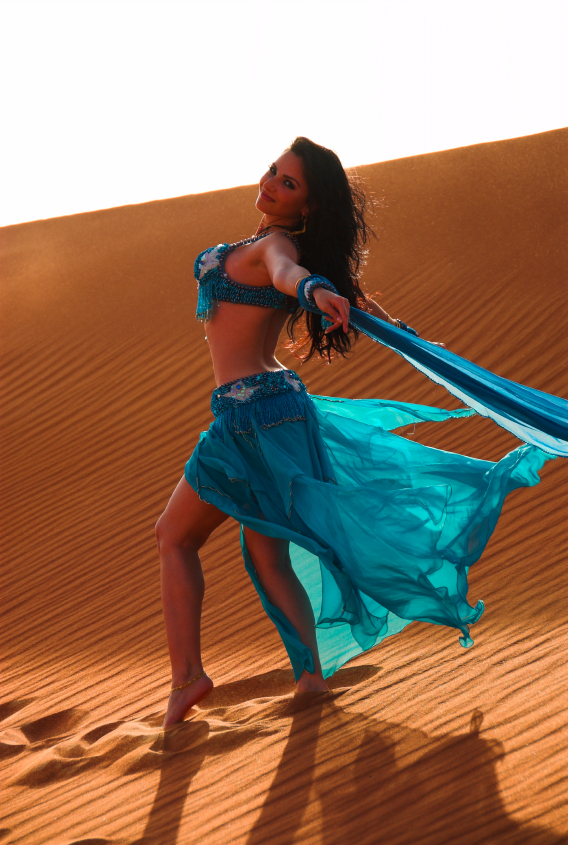
|
| Just being all I can be... Me blog! |
| Noted Personalities |
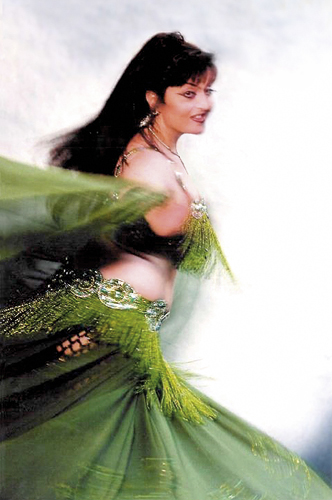
|
| :Bauchtanz Chryssanthi Sahar [ wikimedia.org ] |

|
| Best Tips about Belly Dancing |
|
|
 |
 |
 |
Catch the updates all on this column. This include movies as well as interesting links.

|
| Belly dance movie. |
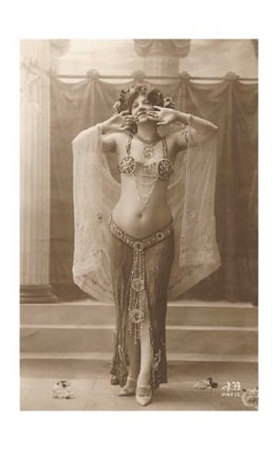
|
|
 |

|
|
|
|
|

|
|
|
|





